"What HAPPENED?"
Chenxuan Mu & Davy Lee
This is a group project. This prototype aims to reconnect with emotions and memories linked to alcohol and encourage people to reflect on their actions and feelings while overdrunk.
The project consists mainly of two parts. The first part is an installation composed of a projector, empty wine bottles, and video, which attempts to recreate the happy, noisy, and somewhat chaotic atmosphere of a drinking party. The second part is an interactive installation that uses computer vision technology to recreate the experience of people trying to reconstruct their lost memories after a blackout.
—— May, 2025——
Motivation
Our original idea is to make something to record and reproduce the memories connected to alcohol drinking, especially when people are overdrunk and get blackouts. Sometimes they are absurd comedies, and sometimes they could be sad stories. People sometimes forget “what happened” because they are overly excited; or, oppositely, people intentionally buy drunkenness to escape the pain in reality.

So how does it feel? What is it like? Can we share such impressions or feelings with others? It could be a photo taken by a friend that you looked like an idiot while you had no idea about that at all, or it could be an abstract picture that nobody can understand, but you know it is exactly what you feel when you reach a misery of illusion.
We aim to do more than share. We hope people share their dark humor while also realizing that alcoholism is not a good habit. There is a Hungarian proverb called “Szégyen a futás, de hasznos (Escaping is shameful but useful)”; however, maybe the truth is, we do not have to be ashamed of escaping, but it is not useful, as we still have to face the reality one day. So just be brave and responsible to yourself!
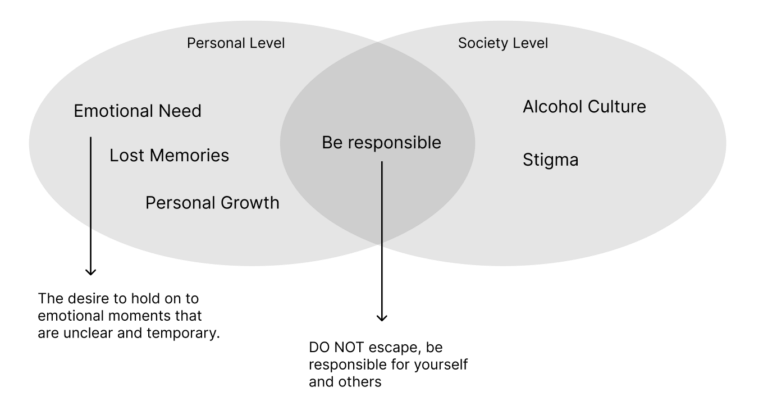
Lo-fi Prototyping
Stage 1: Sketch Drafting
Our hypothetical context is an exhibition of art installations on the theme of drunkenness in a public space. The exhibition consists of several interactive installations that have in common the use of empty wine bottles as a material that embodies sustainability. In the context we brainstormed several projects, and the final decision is based on the last two ideas.
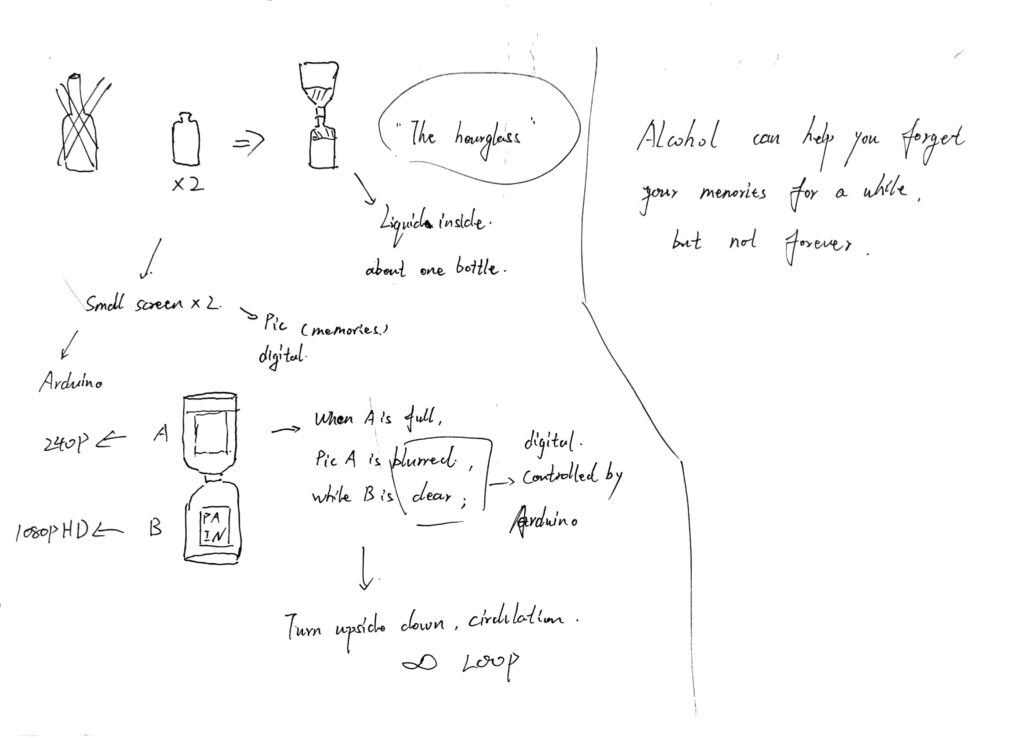
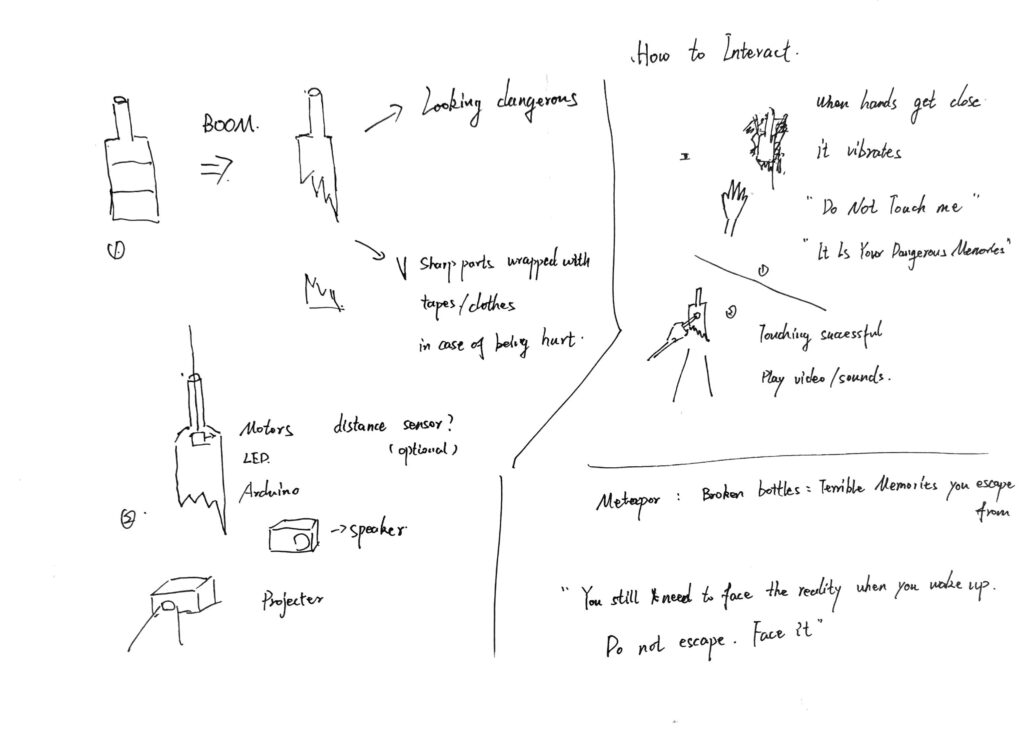

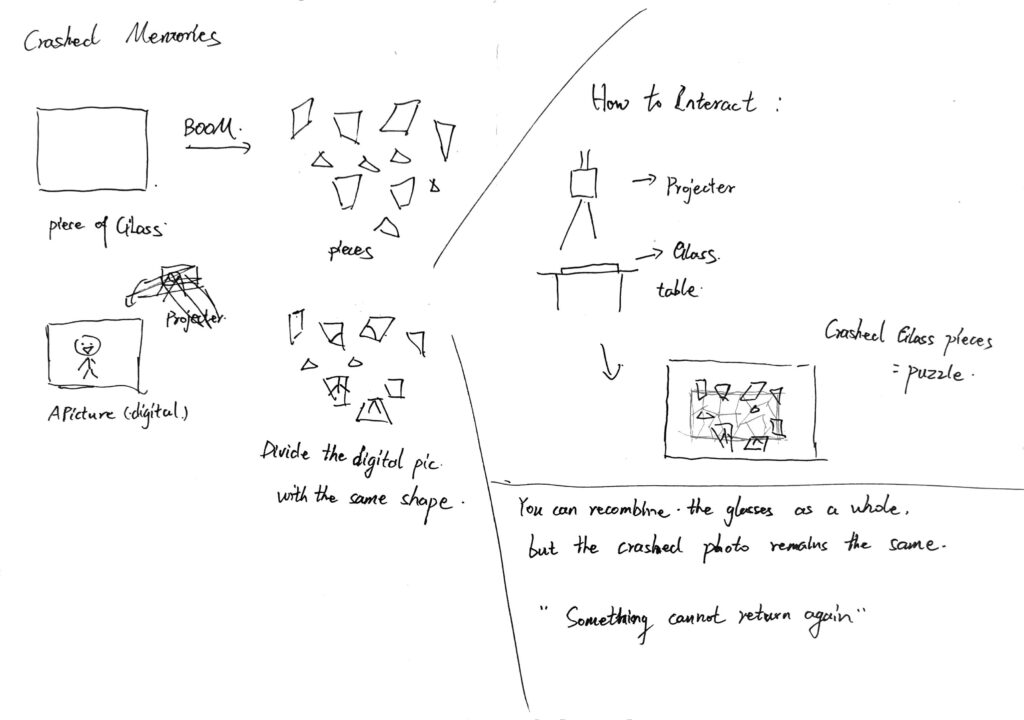
Stage 2: Storyboard
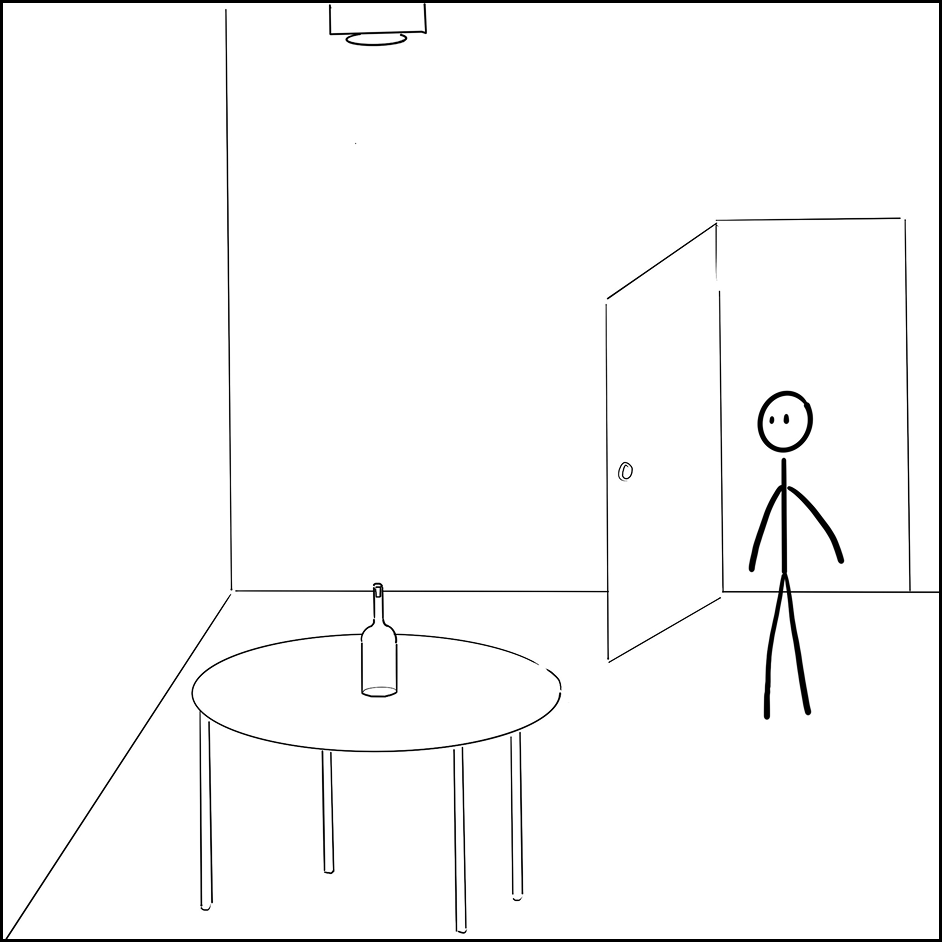
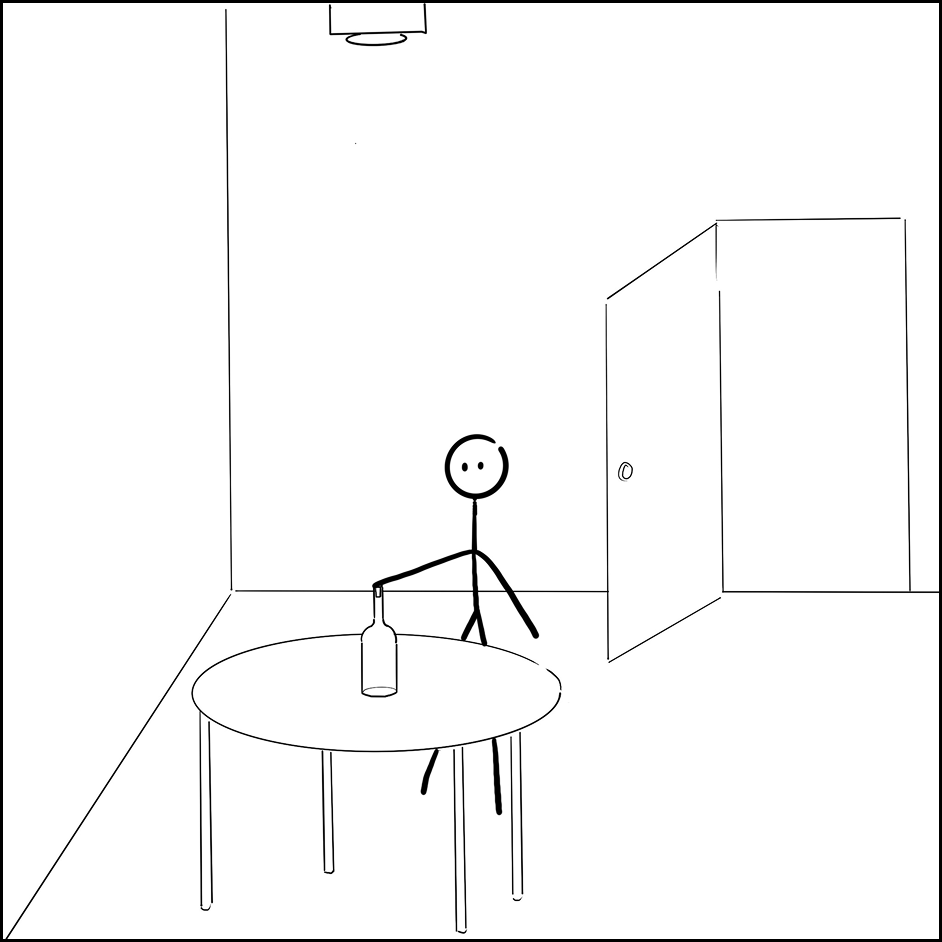

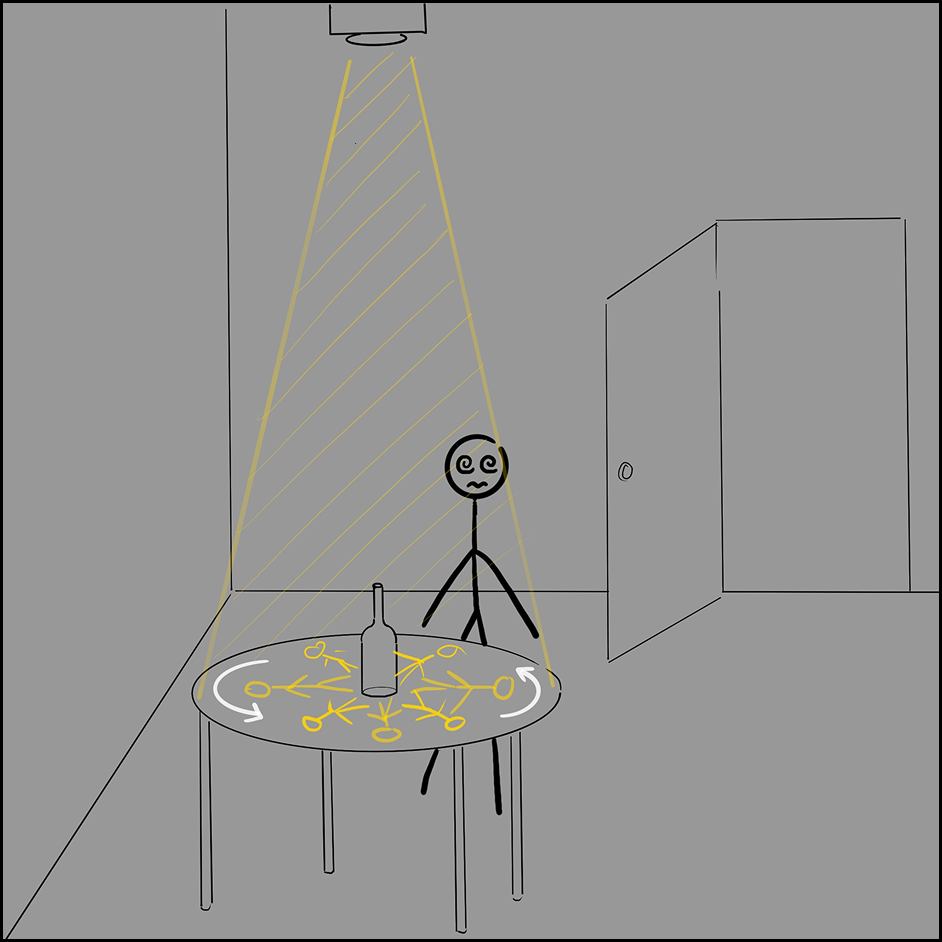


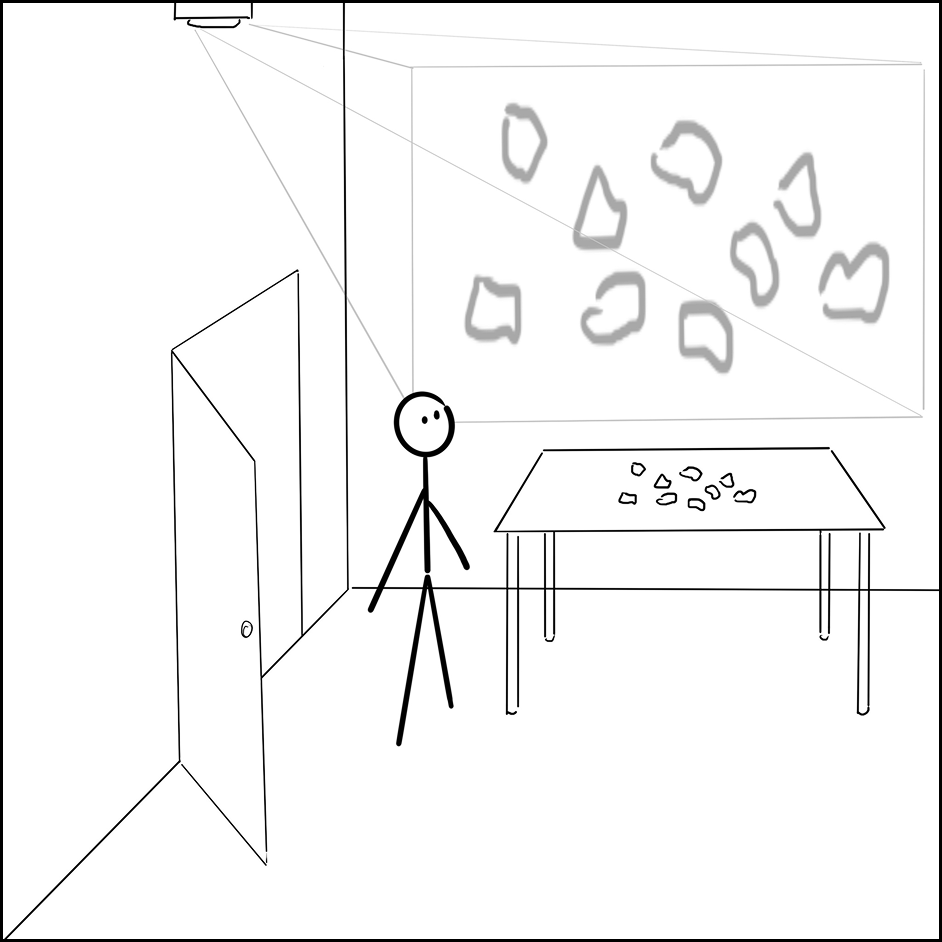
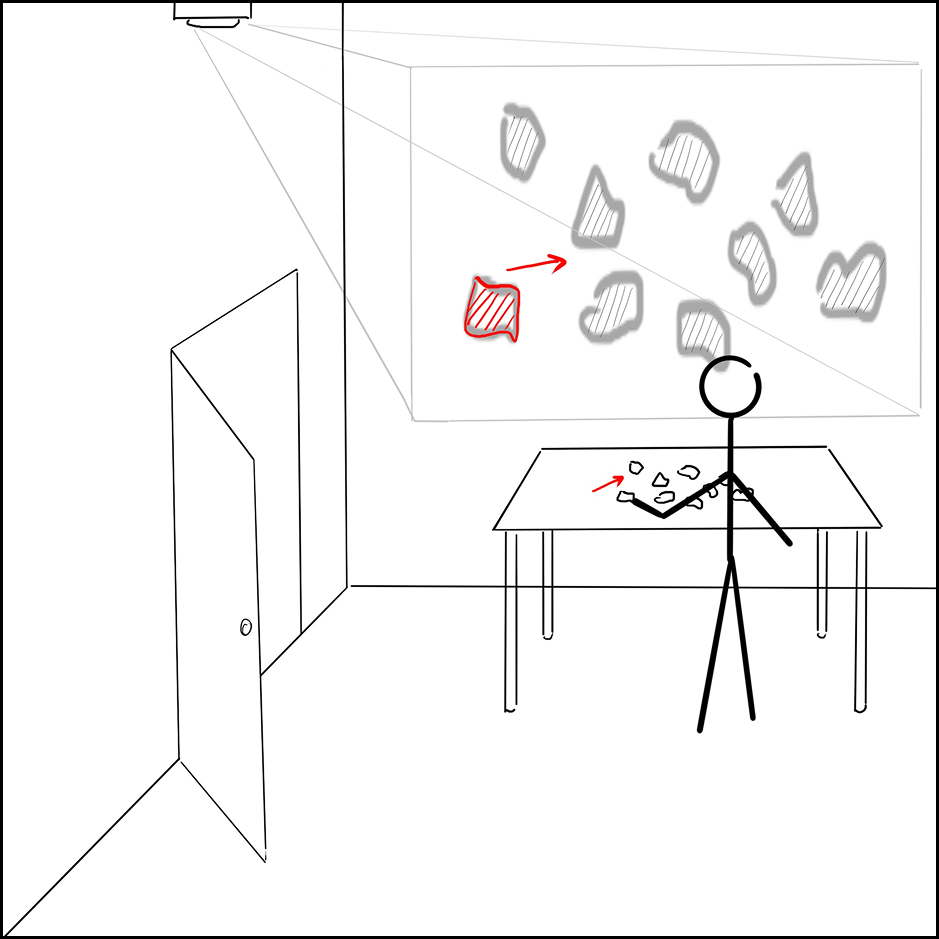
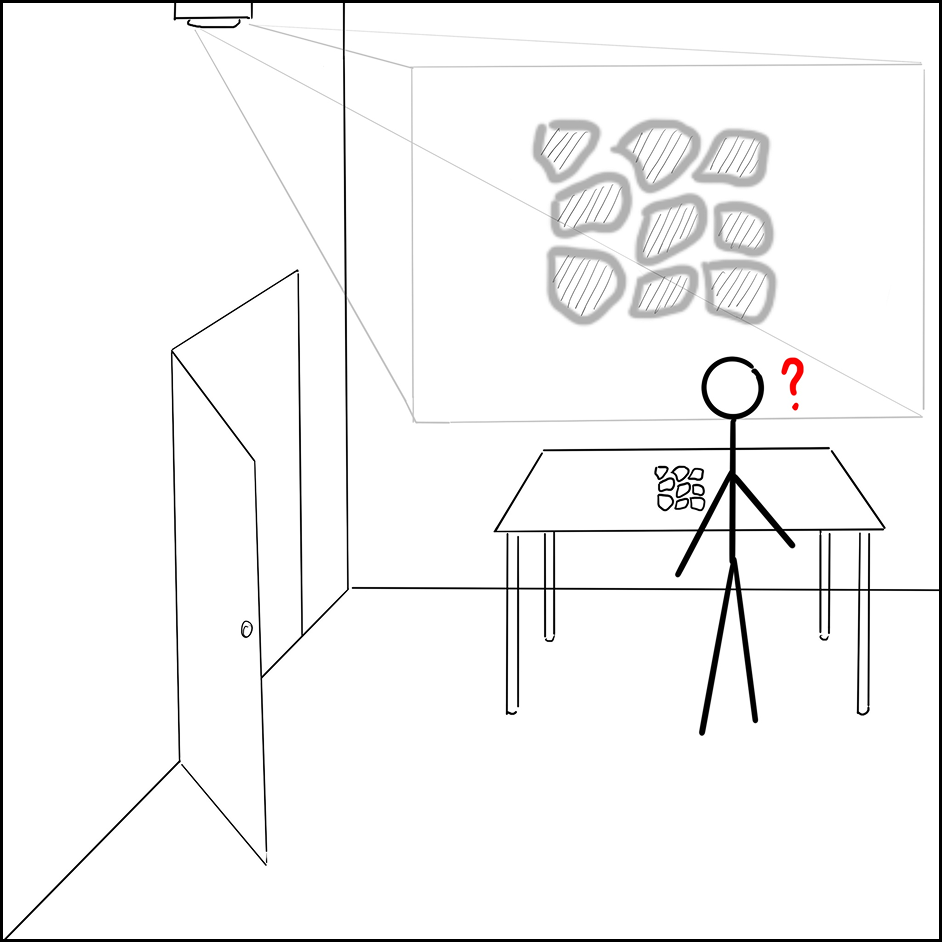
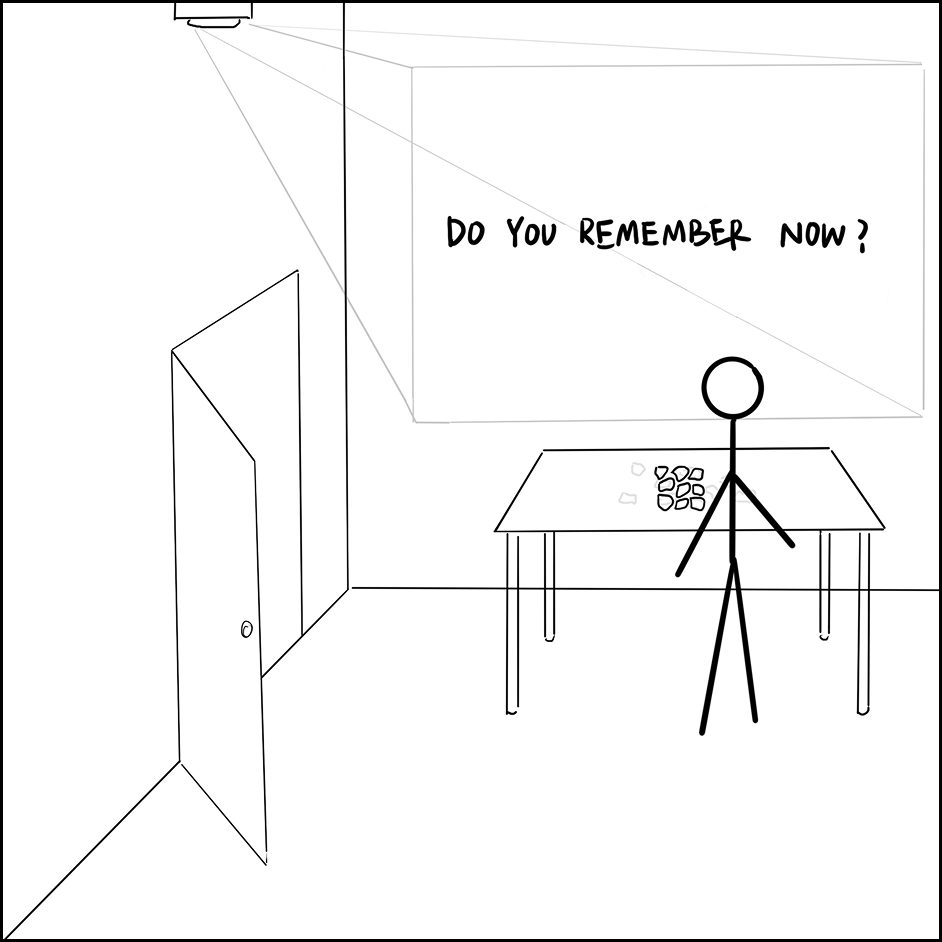
Stage 3: Technical feasibility test (Part 2)
The technical realization of the interactive puzzle is divided into two parts:
Physical-Digital Sync Jigsaw puzzle: When the visitors move the puzzle (wine bottle pieces) on the table, the image on the projection moves in synchronization.
Interaction of Sharing: the visitors can upload images and create puzzles.
The first part is related to computer vision technology. The camera and computer detect the glass bottle pieces and track their motion, then reflect them on the screen. We choose a combination of OpenCV+ArUco as a solution. ArUco code is an open-source program that can record and track the motion of objects by marking them with a special QR code, which is efficient for prototyping.
Official Website of OpenCV: https://opencv.org/
ArUco Official Technical Files: https://docs.opencv.org/4.x/d5/dae/tutorial_aruco_detection.html
Hi-fi Prototyping
Stage 4: Atmosphere Creation
The two parts of the project aim to convey subtly different emotions to the audience, stemming from the creators’ distinct experiences and motivations regarding drinking.
The first part seeks to recreate a multi-person, joyful, and even slightly chaotic scenario. The overall mood is more comedic, so this section uses fast-paced music as its prototype. It is important to note that the purpose of the prototype in this section is merely to describe the atmosphere, not to be confined to a specific form. For example, we could use more projectors, a darker space, or even a slanted floor to recreate the dizziness of drunkenness.
The second part assumes a scenario of self-reflection after intoxication, which is personal, fragmented, and calm. We can imagine the feelings of someone trying to recall their memories before intoxication but struggling to succeed. We have recreated this feeling on glass shards: even if the puzzle is successfully reassembled, the image remains incomplete, with a small portion missing. This missing part is likely the most important information in the photograph.
Of course, we welcome viewers to have different opinions about these two parts. Perhaps, in the eyes of the audience, this is just an abstract video and a fun puzzle made from discarded wine bottles and programming, and that is perfectly fine. Our goal is to provide an interesting format for everyone to share their views and experiences regarding drinking. Whether happy or sad, they are all worth sharing.
Stage 5: Public Participation Techs
Early on in the prototype design phase, we realized that asking all viewers to piece together a fixed image would be boring and lack engagement. So we came up with the idea of getting viewers involved by uploading their own experiences with drunkenness and letting others guess what happened. This is also where the name “What Happened” comes from.
Compared with computer vision programming, the sharing part is more complex and challenging. What we did is an auto-generated puzzle function. Due to limitations of our server, the overall logic cannot be completed entirely on the server, and some functions need to be run locally. By scanning a QR code, the visitors upload their own pics to the server. The pics will be automatically downloaded into the local program and cut into multiple pieces. Currently, the pictures are automatically cut into 12 parts. Their shapes are the same as the bottle pieces, which is progress compared with the lo-fi version.

(The End)
References
Cooper, M. L. (1994). Motivations for alcohol use among adolescents: Development and validation of a four-factor model. Psychological Assessment, 6(2), 117–128.
YouTube:
What Happens To Your Brain When You Get Blackout Drunk | The Human Body. https://www.youtube.com/watch?v=zdofbRjXHkQ\